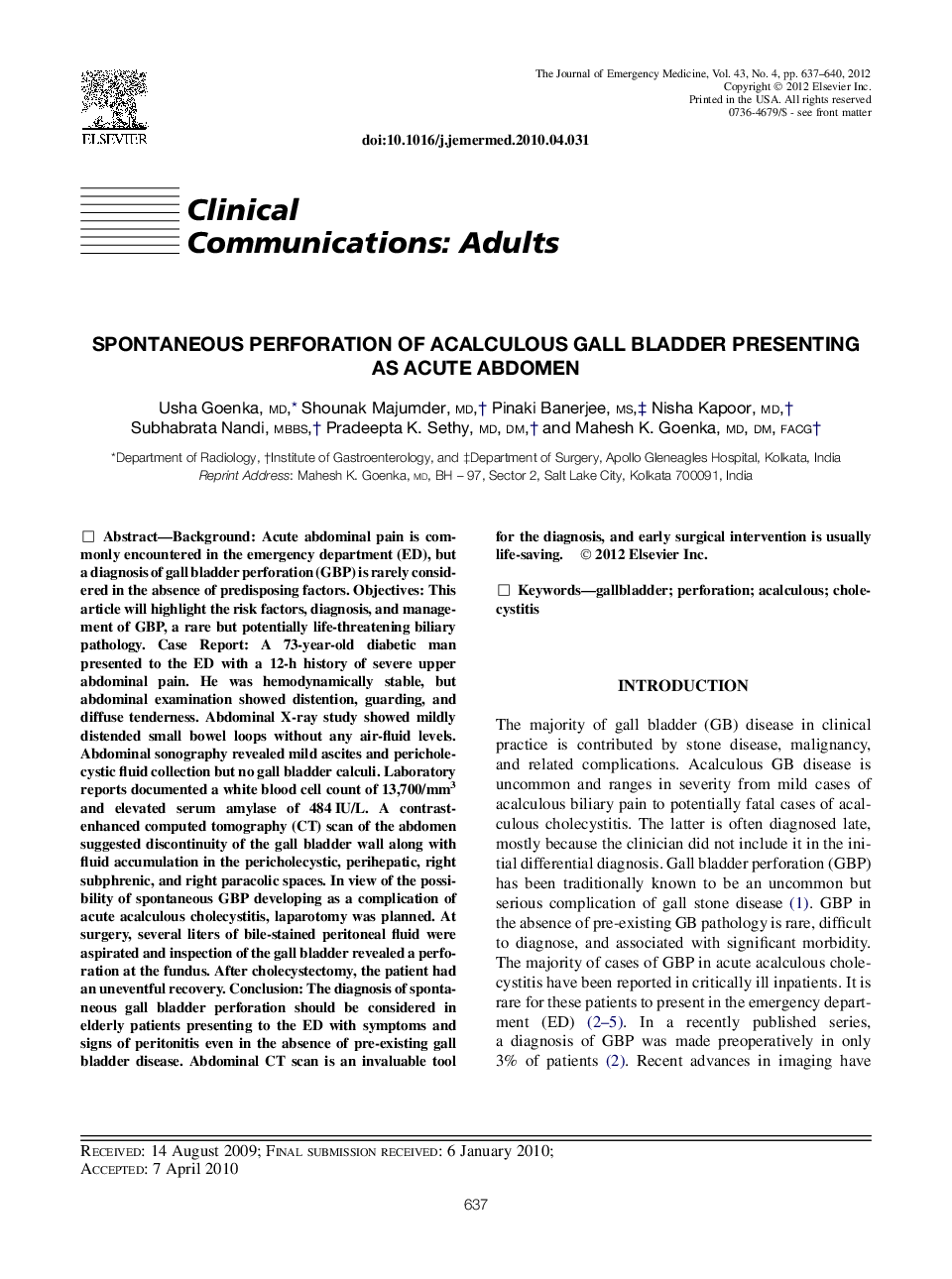| Article ID | Journal | Published Year | Pages | File Type |
|---|---|---|---|---|
| 3248982 | The Journal of Emergency Medicine | 2012 | 4 Pages |
BackgroundAcute abdominal pain is commonly encountered in the emergency department (ED), but a diagnosis of gall bladder perforation (GBP) is rarely considered in the absence of predisposing factors.ObjectivesThis article will highlight the risk factors, diagnosis, and management of GBP, a rare but potentially life-threatening biliary pathology.Case ReportA 73-year-old diabetic man presented to the ED with a 12-h history of severe upper abdominal pain. He was hemodynamically stable, but abdominal examination showed distention, guarding, and diffuse tenderness. Abdominal X-ray study showed mildly distended small bowel loops without any air-fluid levels. Abdominal sonography revealed mild ascites and pericholecystic fluid collection but no gall bladder calculi. Laboratory reports documented a white blood cell count of 13,700/mm3 and elevated serum amylase of 484 IU/L. A contrast-enhanced computed tomography (CT) scan of the abdomen suggested discontinuity of the gall bladder wall along with fluid accumulation in the pericholecystic, perihepatic, right subphrenic, and right paracolic spaces. In view of the possibility of spontaneous GBP developing as a complication of acute acalculous cholecystitis, laparotomy was planned. At surgery, several liters of bile-stained peritoneal fluid were aspirated and inspection of the gall bladder revealed a perforation at the fundus. After cholecystectomy, the patient had an uneventful recovery.ConclusionThe diagnosis of spontaneous gall bladder perforation should be considered in elderly patients presenting to the ED with symptoms and signs of peritonitis even in the absence of pre-existing gall bladder disease. Abdominal CT scan is an invaluable tool for the diagnosis, and early surgical intervention is usually life-saving.
